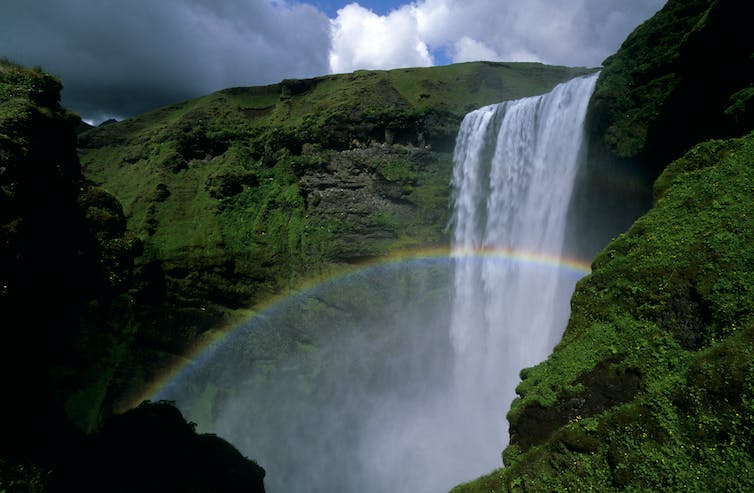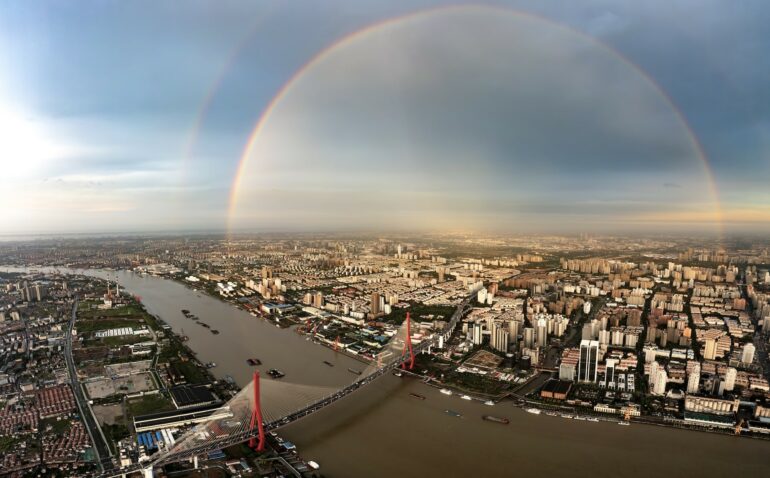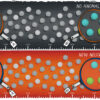
Curious Kids is a series for children of all ages. If you have a question you’d like an expert to answer, send it to [email protected].
Can rainbows form in a circle? – Henry D., age 7, Cambridge, Massachusetts
The legend goes that there is a pot of gold hidden at the end of every rainbow. But is there really an “end” to a rainbow, and can we ever get to it?
Most us go through life seeing rainbows only as arches of color in the sky, but that’s only half of what is really a circle of color.
Normally, when you look at a rainbow, the Earth’s horizon in front of you hides the bottom half of the circle. But if you are standing on a mountain where you can see both above and below you, and the sun is behind you and it is misty or has just rained, chances are good that you will see more of the rainbow’s circle.

How full this rainbow looks depends in part on how high up you’re standing while watching sunlight hit the waterfall’s mist.
Wolfgang Kaehler/LightRocket via Getty Images
To see the full circle, however, you will have to be in an airplane, literally above the clouds. Or you could create your own rainbow. I am a physicist, and I’ll explain how to do that in a minute.
How a rainbow forms
Rainbows form when sunlight from behind you hits millions of tiny round water droplets in front of you and bounces back to your eyes.
As a sunbeam hits a droplet at an angle, it bends into the water and separates out into a spectrum of colors. Scientists call the bending of light “refracting.” The colors separate because each “color” of light travels with a different speed in water, or, for that matter, any transparent material that light can travel through, like glass in a prism.
When the colors hit the back wall of the water droplet, the angle is now too shallow for them to bend out into the air, so they reflect back into the water droplet and return to its entrance wall. From there, the colors can bend out again into air and reach your eye.
The United Kingdom’s Meteorology Office explains how light refracts, or bends, in a water droplet or a prism.
As you look at these droplets, the different colors happen to bunch up at a slightly different angle, and each color forms the circular rim of a cone with your eye at the tip of the cone. And, voila, you have your own personal rainbow.
The droplets that send the colors to your eye cannot send them to anyone else, so even though everyone near you sees the same rainbow at a distance, each person really sees their own slightly different rainbow. It’s all in the eye of the beholder.
For rainbows to form, the shape of the water droplets has to be very close to a sphere for all of them to bend and reflect the colors in harmony. This happens for very small droplets, such as a fine mist, or just after a rain…



